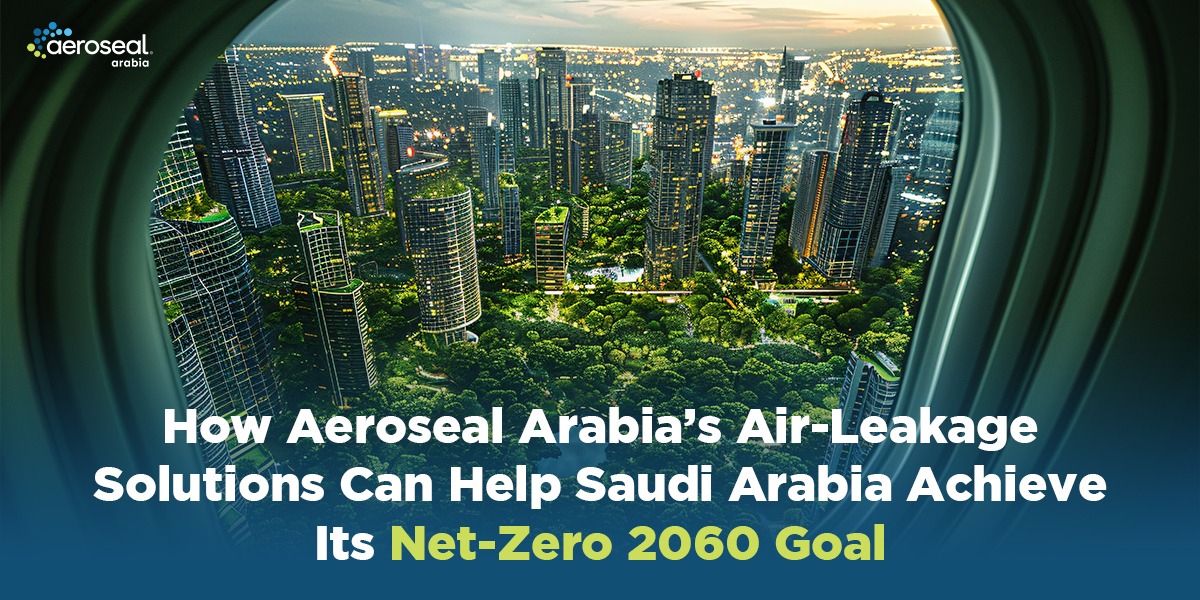
How Aeroseal Arabia’s Air-Leakage Solutions Can Help Saudi Arabia Achieve Its Net-Zero 2060 Goal
Saudi Arabia’s Net-Zero 2060 commitment is one of the boldest climate goals in the region, reflecting a clear vision for sustainable development and energy efficiency. As the Kingdom accelerates its transition toward cleaner energy and greener infrastructure, improving building performance has become a key priority. One of the most effective and often overlooked ways to reach this goal is through air leakage reduction and that’s where Aeroseal Arabia plays a vital role.
Why Air Leakage Matters in Saudi Buildings
Every building, no matter how modern, loses a significant amount of conditioned air through invisible leaks in ducts and walls. This constant air exchange forces HVAC systems to consume more energy, increasing both operational costs and carbon emissions.
In a country like Saudi Arabia, where cooling accounts for more than 70% of total building energy use, the impact of air leakage is enormous. A leaky system means wasted electricity, higher emissions, and reduced comfort for occupants. Addressing this issue is essential to achieving energy efficiency and moving closer to the Kingdom’s net-zero target.
The Science Behind Aeroseal Arabia’s Air-Sealing Technology
Aeroseal Arabia uses a patented, science-driven process that seals air leaks from the inside without tearing down walls or ducts. During the process, a non-toxic, water-based sealant is dispersed into the air system. The particles automatically locate and seal even the tiniest leaks, some as small as a human hair.
This innovation ensures that conditioned air stays inside, maintaining stable indoor temperatures while significantly reducing energy loss. The results are immediate, measurable, and verifiable through post-sealing performance reports.
Supporting Saudi Vision 2030 and Net-Zero 2060
Saudi Vision 2030 focuses on sustainability, innovation, and responsible energy use. Aeroseal Arabia’s air-leakage solutions directly support these goals by improving building efficiency and reducing dependence on high-energy cooling systems.
When combined with renewable energy and smart building management systems, airtight construction creates a powerful pathway toward net-zero emissions by 2060. Each sealed building becomes a small but crucial contributor to the national sustainability agenda.
Real-World Impact: Efficiency Across Sectors
Aeroseal Arabia’s solutions are already making a measurable difference across the Kingdom.
- Hospitals and healthcare facilities use air sealing to maintain sterile, humidity-controlled environments and reduce energy bills.
- Universities and schools benefit from improved indoor air quality and reduced HVAC strain, supporting better learning environments.
- Commercial and government buildings lower their carbon footprint by enhancing insulation and cutting unnecessary energy consumption.
These improvements align perfectly with Saudi Building Code (SBC) and ASHRAE standards, ensuring compliance with both local and international performance benchmarks.
Long-Term Benefits for Energy and the Environment
By sealing air leaks, buildings not only save energy but also extend the life of HVAC systems and reduce maintenance needs. This contributes to lower emissions, improved indoor comfort, and reduced operational costs all key pillars of sustainable construction.
In the long term, large-scale adoption of Aeroseal technology across Saudi Arabia could save billions of kilowatt-hours annually and significantly cut national carbon output. These results show how small changes in building efficiency can lead to major progress in Saudi Arabia’s net-zero journey.
Conclusion
Saudi Arabia’s Net-Zero 2060 goal depends on practical, scalable solutions that enhance energy performance without disrupting daily life. Aeroseal Arabia delivers exactly that an innovative approach that seals leaks, saves energy, and supports the Kingdom’s environmental vision.
By integrating air-sealing technology into both new and existing buildings, Saudi Arabia can make real progress toward a more sustainable, energy-efficient, and resilient future.



